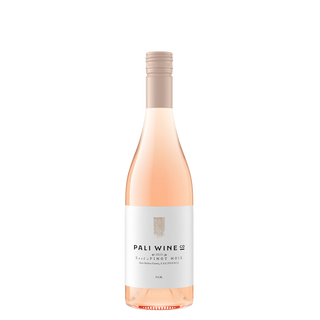Here's a brief history on Chenin Blanc–In the U.S., Chenin Blanc was historically used as a blending grape in mass-produced white wines during the 1970s and ‘80s. Under the right conditions, the grape grows vigorously, producing large, heavy clusters—ideal for inexpensive wines when farmed for that purpose. However, when grown for premium wines, Chenin Blanc becomes incredibly complex and expressive, as seen in the renowned wines of France’s Loire Valley, parts of South Africa, and even here in California.
For the past 10 years, we’ve produced Chenin Blanc from grapes sourced from Jurassic Park Vineyard in the Santa Ynez Valley. During that time, our passion for the grape grew, often comparing bottles from around the world and dreaming of leaving our mark on its history. This passion led us to take the next step—growing Chenin Blanc on our own estate.
To our knowledge, there are very few, if any, vineyards growing Chenin Blanc in cool-climate sites between here and Paso Robles, with most being found farther north. Our vineyard, located in the north-easternmost corner of the Sta. Rita Hills, sits on sandy soils in one of the coolest and most exposed parts of the AVA. Originally planted with Pinot Noir and Chardonnay in 2012, we followed the tradition of other great Sta. Rita Hills vineyards. The region is known for its Pinot Noir and Chardonnay, with wineries paying top dollar for these grapes. But when Pierce’s disease hit a portion of our vineyard, killing nearly 20% of our Pinot Noir vines, we had to make a decision. Instead of replanting Pinot Noir, we explored other varieties.
Our vineyard’s cold, ocean-influenced climate presented challenges—not all grape varieties would ripen under these conditions. Chenin Blanc, in particular, ripens late and can produce heavy crops, which can further delay ripening if not thinned properly. We also faced the risk of replacing Pinot Noir with grapes that commanded lower market prices. Ultimately, we decided to plant Dornfelder, Gamay, Syrah, and Chenin Blanc. While the red varieties had some precedent in the area, Chenin Blanc was largely uncharted territory.
Some believed the region was too cold for Chenin Blanc. However, after research, we found that parts of the Loire Valley, where Chenin Blanc thrives, are similarly cool. This gave us confidence that our vineyard could be suitable for the grape. Our hypothesis was further supported by comparisons to Limoux in Languedoc, where Chenin Blanc is grown alongside Chardonnay, a variety we were already farming.
Still, we knew we were taking a risk: the grapes might not ripen, the wine could be unimpressive, and our Chenin Blanc experiment could fail. Yet, our collective love for the grape drove us forward, hoping our vineyard’s long growing season and mild climate would result in a wine with bright acidity, chalky minerality, and reserved fruitiness—on par with the best in the world.
In 2022, we decided to graft Chenin Blanc onto existing rootstock that had originally supported Pinot Noir, carefully selecting sections of the vineyard that would best support it. The first usable crop arrived the following year, in 2023. Around this time, we also shifted our focus to organic and eventually regenerative farming practices. The lingering effects of Pierce’s disease, combined with our new farming methods and experimental grape varieties, brought a mix of excitement and anxiety to the vineyard.
The 2023 growing season presented some challenges, but overall it was favorable. Knowing Chenin Blanc can produce heavy crops that slow down ripening, we aggressively thinned the vines early in the season. Later, we faced issues with botrytis in this block, which required another thinning pass closer to harvest to remove the infected clusters. While the weather was mostly kind, the season wasn’t without its difficulties.
As the grapes ripened slowly, they retained intense acidity—a hallmark of great Chenin Blanc. Confident in the outcome, we fermented the wine with native yeasts and aged it in 100% neutral French oak for four months.
Once bottled, we knew the wine would need to rest for a few months. Its structure and elegance suggested it would benefit from bottle aging, allowing the acidity, fruit, and mineral qualities to harmonize over time. This gradual evolution would create a more balanced and cohesive wine.
Every few weeks, we opened a bottle to track its progress. With each tasting, we noticed the wine mellowing, and the acidity, fruit, and mineral qualities integrating beautifully. This confirmed that the bottle aging was improving the wine’s complexity and character.
Our 2023 Chenin Blanc is now available! Shop the wine online to have shipped directly to your doorstep or pick up from your local tasting room.







